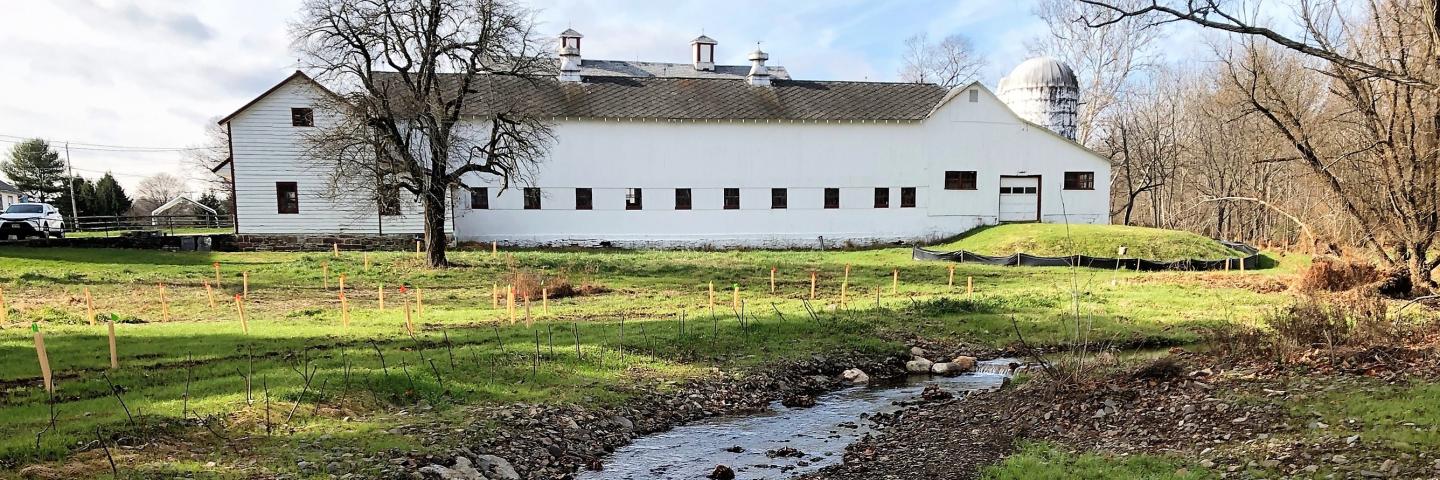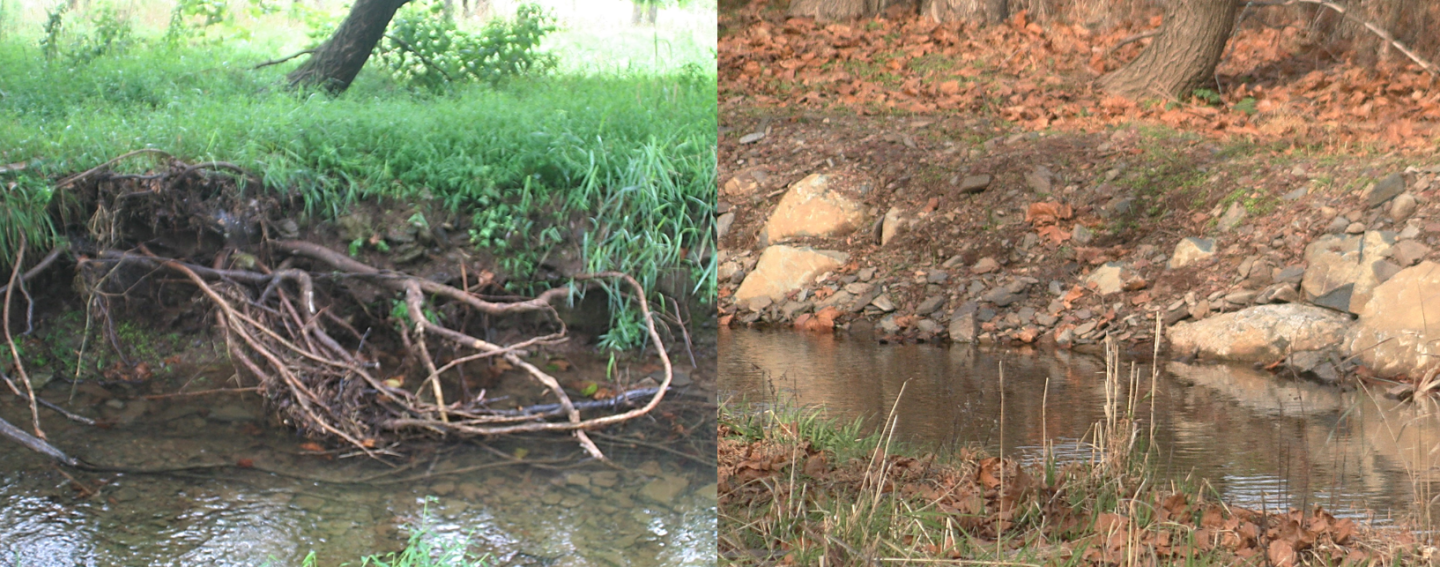Persistence Pays Off for NJ Stream Restoration

After multiple delays due to the COVID-19 pandemic, NRCS and its partners unite to complete the Walnut Brook stabilization.
Since 1999, visitors have been flocking to a dairy farm turned 40-acre nature preserve in the heart of Hunterdon County known as Dvoor Farm. Owned and operated by Hunterdon Land Trust (HLT), the preserve is a serene refuge where visitors can explore both the area’s agricultural history and nature at its finest as they make their way through wetlands, a pollinator meadow, and by the meandering Walnut Brook Stream.
However, every time severe weather hit the area, the stream would wreak havoc across the preserve and nearby Mine Brook Park as its banks would continue to erode. To remedy this, the Natural Resources Conservation Service (NRCS) in New Jersey, has been working with HLT since 2008 to stabilize the entire streambank and finally completed the much-needed work.

“We enhanced the Walnut Brook over a decade ago and have now continued the stream corridor restoration work immediately downstream with a mix of assistance from some of the original folks and now also a younger generation of conservationists,” said NRCS Civil Engineer Nigel Woodfork. “While having the patience to help the project along over a multi-year process was challenging, the conservation results over time will be its own reward.”
In 2008, the work focused on stabilizing 670 feet of eroded streambank along the upper reach through regrading, the strategic placement of over 3,000 shrubs, the installation of an erosion control mat, and the creation of a three-acre wetland.
Funding for the lower 1,200 feet wasn’t secured until 2018 through NRCS’ Environmental Quality Incentive Program (EQIP) and other local grants. However, due to the COVID-19 pandemic and the subsequent shutdown of government offices, work had to be delayed until this past September.
“Work was supposed to start in September of 2021, then December, and then again had to be put off because we couldn’t get the permits needed,” said NRCS Soil Conservationist Jess Henry. “The delays were frustrating and caused us to have to modify the design plans due to the ever-changing stream conditions, but we were determined to get the work done.”
That determination would come in handy as the team got ready to finally start work only to realize that the high velocity water running through the stream had again necessitated changes.
“It's been quite the process and streams change so quickly, especially this one. We had to make some onsite adjustments during implementation, but we worked as a team and forged ahead," Henry continued.
Technical Service Provider Troutscapes LLC. completed the stabilization by sloping the banks to open floodplain access and strategically placing large boulders to deflect the water. They also created in-stream riffles and deep pools to improve oxygenation and create a source of cool water for temperature sensitive aquatic organisms in the summer months. and vernal pools, which will provide storage for water within the floodplain and reduce pressure on the streambanks while also providing habitat for amphibians.

HLT will be planting over 280 native trees and shrubs, in addition to the 300 already planted, to improve the riparian buffer, a vegetated area that will protect the stream from sediment runoff and help wildlife.
“The Walnut Brook is state-regulated for trout maintenance so they and the other stream dependent life will benefit from the extra shade and shelter from the in-stream channel manipulations and new tree plantings,” said Woodfork.
Erosion control blankets were installed to allow vegetation along the banks a stable place to grow and take root. Within a few years, the blankets will have degraded, but the trees and shrubs in their place will provide additional stabilization along the stream.
HLT Stewardship Program Manager Emily Dunn said the trust was “thrilled” by the outcome. She continued, “We look forward to continuing the project in the months and years to come with tree plantings and other management practices that will enhance wildlife habitat and natural resources. Enhancement of natural resources for public enjoyment and education is a core component of our mission, and this restoration project significantly improves the health of Walnut Brook as well as the surrounding floodplain.”
And while the team couldn’t have foreseen the many twists and turns the project would take to get to the finish line, there’s no doubt that the partnership between HLT, NRCS, and the many other local organizations involved at Walnut Brook, will be appreciated by visitors to the site for years to come.


